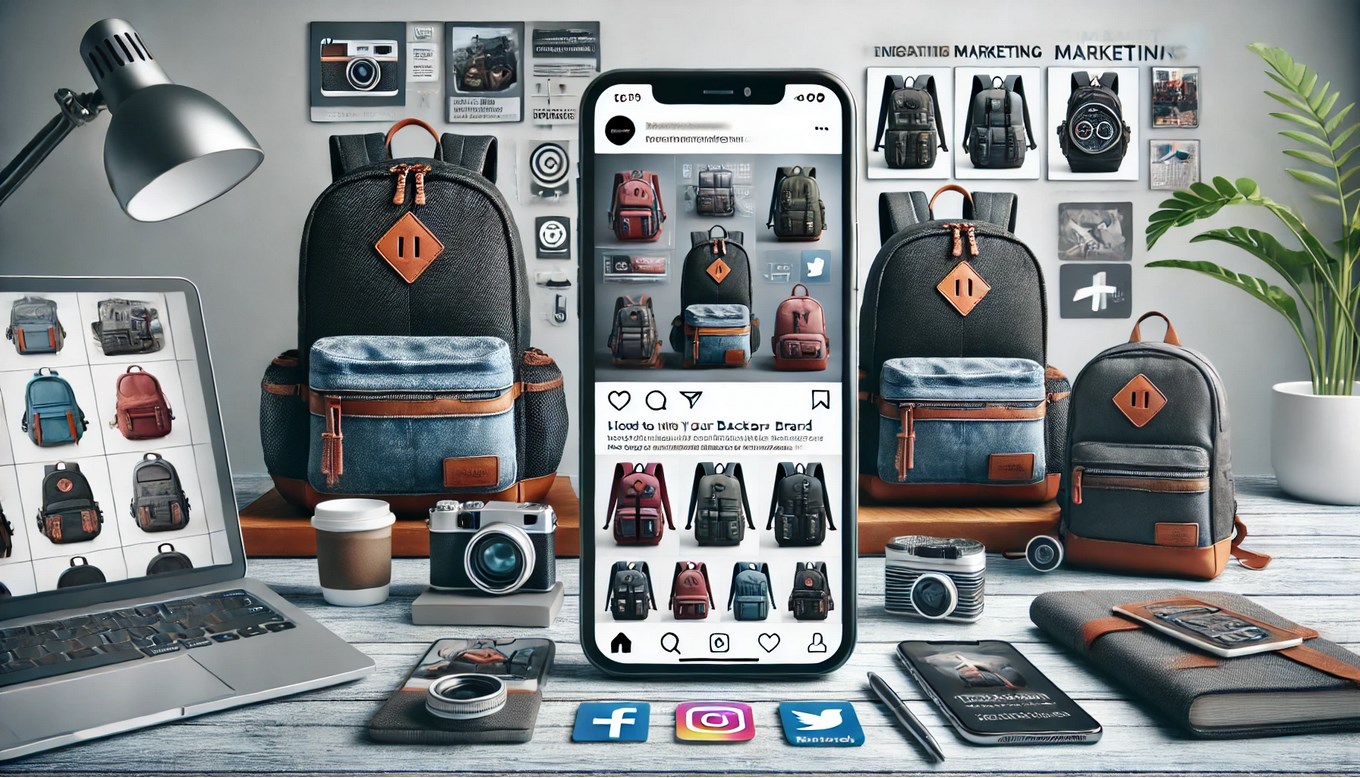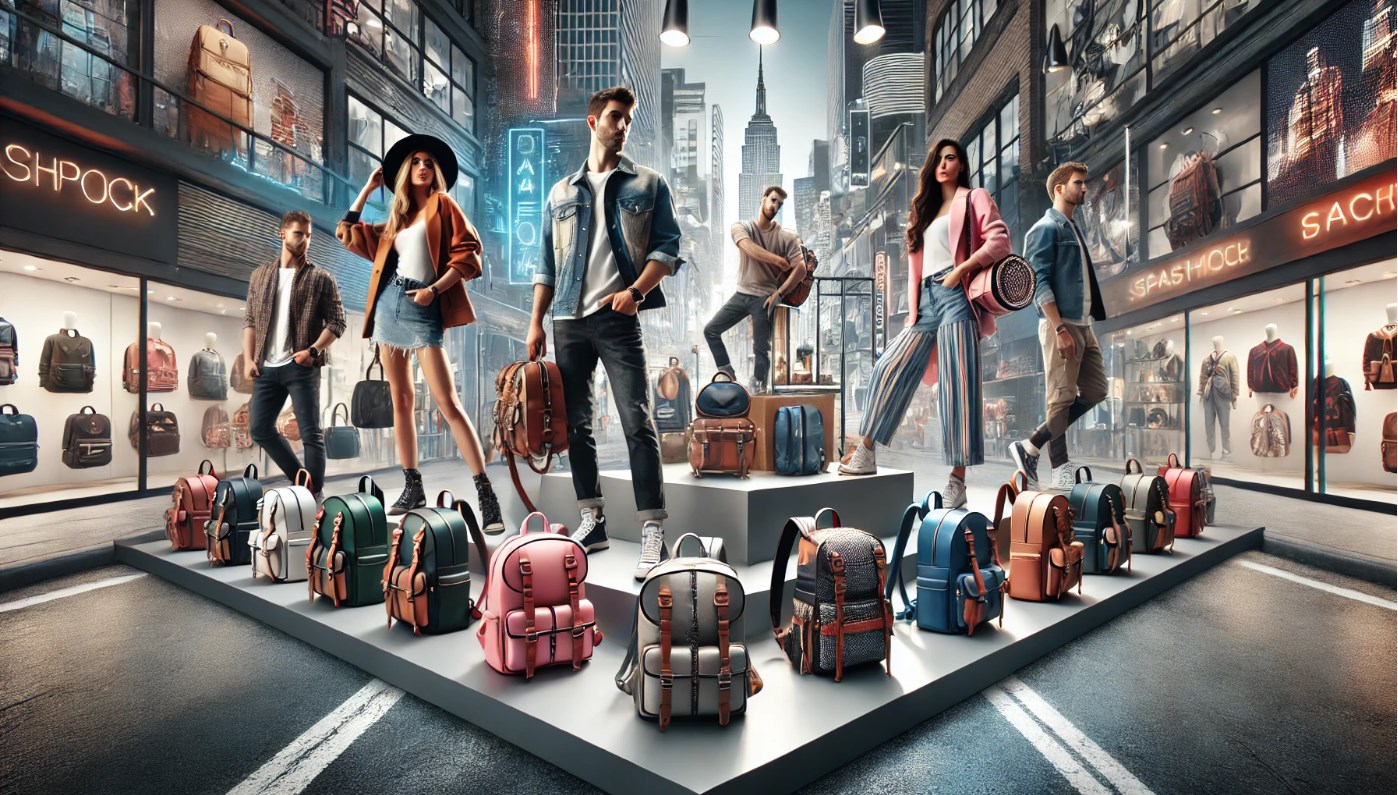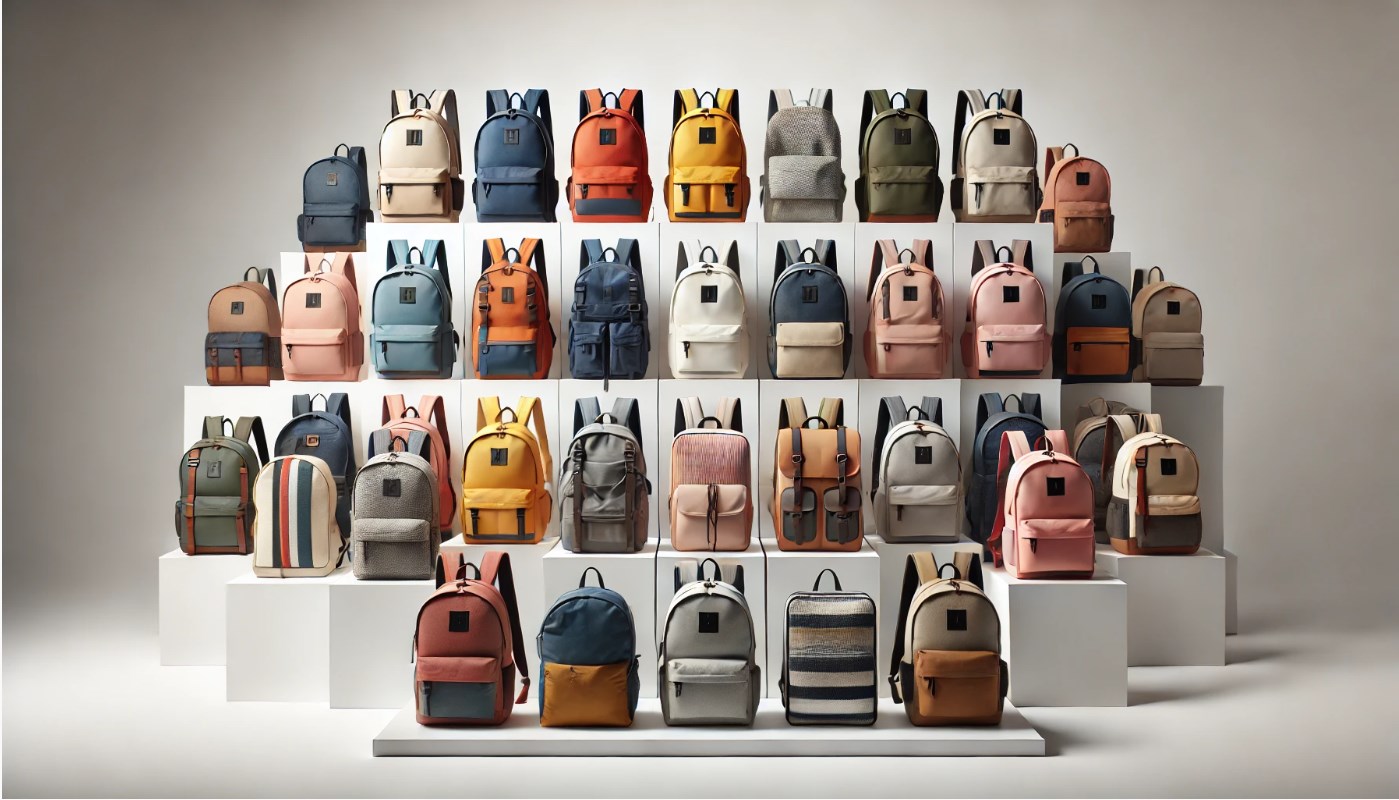The backpack industry is a competitive and crowded space, with numerous brands offering a wide array of designs, features, and price points. As the market continues to expand and evolve, standing out among the competition has become increasingly challenging. However, while the competition is fierce, it also presents an opportunity for innovative brands to carve out a unique position and capture the attention of consumers.
To successfully differentiate your backpack brand in a saturated market, you need to think strategically and creatively. It’s not just about having a great product; it’s about communicating why your backpacks are the right choice for your target audience, providing an exceptional customer experience, and offering something distinct that others can’t easily replicate.
Backpack Market and Its Challenges
Before diving into how to stand out, it’s important to understand the landscape of the backpack industry. The market has become saturated with a vast array of options, from school backpacks and business bags to hiking backpacks and travel gear. As consumer preferences evolve, new trends emerge, and brands continuously innovate, it can feel like a constant uphill battle to differentiate yourself.
Market Segmentation and Customer Needs
The first step in standing out is identifying your niche within the broader backpack market. Not all backpacks are created equal, and different customer segments have varying needs. Some of the key segments include:
- Commuters: Customers who are looking for stylish, functional backpacks for daily use in urban environments.
- Travelers: Consumers who need durable, spacious, and multi-functional backpacks for trips ranging from weekend getaways to long-term international travel.
- Students: Younger customers in need of affordable, spacious, and trendy backpacks that fit their academic lifestyle.
- Outdoor Enthusiasts: People looking for backpacks designed for specific activities like hiking, camping, or backpacking.
- Tech-Savvy Consumers: Shoppers seeking backpacks with integrated tech features, such as laptop compartments, charging ports, or anti-theft features.
Identifying your target audience and understanding their specific needs will help guide your branding, product design, and marketing strategy. Tailor your backpacks to meet these needs, and you’ll naturally carve out a space for your brand in the market.
Key Market Challenges
In a saturated market, standing out can be especially difficult due to several common challenges:
- Price Competition: Many brands compete on price, often offering similar backpacks at lower rates. Competing on price alone can be a race to the bottom, leading to reduced margins and difficulty in sustaining quality.
- Brand Overload: Consumers are exposed to hundreds of brands through social media, search engines, and online ads. Cutting through the noise and reaching your ideal customer requires strategic marketing and compelling brand messaging.
- Innovation Fatigue: With new products and features being released constantly, consumers may suffer from “innovation fatigue.” It’s important to introduce new ideas, but it must be done thoughtfully and not just for the sake of novelty.
Defining Your Brand Identity
The foundation of any successful brand lies in a clear and distinct identity. Your brand identity represents the values, beliefs, and vision that resonate with your target audience. By aligning your product offering with your brand’s core message, you can build a connection with consumers that goes beyond just selling backpacks.
Crafting a Unique Brand Story
A compelling brand story helps humanize your company and forge emotional connections with customers. Tell the story behind your brand—why it was founded, the inspiration behind your designs, and what you stand for. Whether it’s about sustainability, adventure, or craftsmanship, a strong narrative adds depth to your brand and makes it more memorable.
- Share the Why: People buy from brands they connect with. By sharing the “why” behind your products, you can engage consumers who share similar values. If sustainability is a core part of your brand, highlight how your backpacks are made from recycled materials or are designed to be long-lasting.
- Be Authentic: Authenticity is key in building trust with your customers. Don’t just make bold claims—show how you’re living your brand’s values through your actions. This could include transparency in production practices, supporting social causes, or partnering with environmental organizations.
- Create an Emotional Appeal: Tap into the emotions of your target audience. Whether it’s adventure, comfort, or functionality, create a connection that makes your backpacks feel indispensable. For example, marketing your travel backpack as a gateway to life-changing experiences or positioning your commuter bag as a symbol of productivity can enhance emotional appeal.
Building a Strong Visual Identity
Your brand’s visual identity plays a crucial role in how consumers perceive and connect with you. A cohesive visual identity, including logo, color palette, and typography, can set you apart from competitors and make your brand instantly recognizable.
- Logo and Typography: A memorable logo and clean typography are essential for brand recognition. Keep your logo simple, scalable, and versatile across all platforms, from your website to your social media profiles.
- Packaging: Your packaging is an extension of your brand. Consider eco-friendly options, custom designs, or unique unboxing experiences that leave a lasting impression.
- Consistent Branding Across Channels: Whether it’s your website, social media, or physical stores, ensure that your branding is consistent across all touchpoints. Consistent use of color, imagery, and language strengthens your brand identity and makes you easily identifiable.
Creating Innovative and Functional Backpack Designs
To stand out in the saturated backpack market, your product designs must offer something unique—whether it’s enhanced functionality, distinctive aesthetics, or a combination of both. It’s not enough to simply create a “good” backpack; it needs to solve a specific problem or serve a particular need better than your competitors.
Focus on Innovation and Technology
Innovation can be the key to differentiating your backpacks from the competition. Introducing cutting-edge features that enhance the user experience or solve common pain points can make your brand highly attractive.
- Smart Backpacks: Incorporate tech features such as built-in USB charging ports, anti-theft technology, or even solar-powered panels to make your backpacks stand out in the tech-savvy market.
- Modular Systems: Offer customizable or modular backpacks that can be adapted to different needs. For example, detachable compartments or adjustable straps that allow users to change the size and functionality of the bag depending on their needs.
- Sustainability: With growing environmental concerns, sustainable materials are becoming a key differentiator. Consider using eco-friendly fabrics, recycled materials, or producing backpacks that are designed to last longer, reducing waste over time.
Prioritize Functionality and Comfort
Functionality is the cornerstone of a great backpack. Customers are looking for bags that make their lives easier, whether it’s by offering more storage, greater comfort, or better organization. To appeal to your target market, prioritize comfort and usability in your designs.
- Ergonomics: Invest in ergonomic designs that prioritize comfort, particularly for travelers or commuters who may carry their backpacks for long periods. Look at padded straps, breathable back panels, and lightweight materials that distribute weight evenly across the shoulders.
- Organization Features: People value backpacks that help them stay organized. Features like multiple compartments, padded laptop sleeves, and zippered pockets for small items can make a backpack more practical and attractive to consumers.
- Versatility: Backpacks that can be used in multiple settings (such as commuting, travel, and outdoor adventures) have broad appeal. Consider designs that transition seamlessly from work environments to leisure activities.
Design with a Focus on Aesthetics
While functionality is important, don’t forget about the visual appeal of your backpacks. Consumers often look for products that align with their personal style. Offering a range of designs that cater to different tastes will help your brand appeal to a wider audience.
- Unique Styles and Colors: Offering limited-edition designs, unique patterns, or vibrant colors can set your backpacks apart from generic offerings in the market. Bold patterns, minimalist aesthetics, or vintage-inspired designs can help your backpacks make a visual impact.
- Collaboration with Designers: Collaborating with fashion designers or influencers can elevate the perceived value of your backpacks. Limited edition collaborations create exclusivity and appeal to customers looking for something unique.
Marketing Your Backpack Brand Effectively
A great product and strong brand identity aren’t enough on their own. Effective marketing is crucial for ensuring your backpack brand gets noticed and attracts the right customers. By leveraging modern marketing channels and strategies, you can enhance visibility and foster customer loyalty.
Social Media Marketing
Social media is one of the most powerful tools for promoting your backpack brand. Use it to engage with your audience, showcase new designs, and share customer-generated content.
- Influencer Partnerships: Collaborate with influencers who align with your brand values and aesthetics. Micro-influencers, in particular, often have highly engaged followers who trust their recommendations.
- User-Generated Content: Encourage customers to share their experiences with your backpacks on social media. Featuring user-generated content on your accounts not only provides authentic social proof but also fosters a sense of community.
- Targeted Advertising: Use social media platforms like Instagram, Facebook, and TikTok to run targeted ads based on demographics, interests, and behaviors. Well-crafted ads with compelling visuals and messaging can attract new customers and drive conversions.
Content Marketing
Content marketing allows you to showcase your expertise and establish authority in your niche while providing value to your audience.
- Blogging: Write blog posts about backpack-related topics—such as travel tips, packing guides, or sustainable fashion. This can drive organic traffic to your website and improve SEO.
- How-to Guides and Tutorials: Create instructional videos or guides that demonstrate the features and benefits of your backpacks. Show potential customers how your backpacks can solve their problems.
- Email Marketing: Build an email list and engage with customers through newsletters, promotions, and product updates. Personalized emails that speak to the interests and preferences of your subscribers can increase brand loyalty.
Partnerships and Collaborations
Collaborating with like-minded brands or organizations can extend your reach and bring in new customers.
- Retail Partnerships: Getting your backpacks into physical retail stores, especially those that align with your brand’s ethos (like outdoor gear shops or fashion boutiques), can increase visibility.
- Charity Collaborations: Partnering with charitable organizations or causes that resonate with your audience can strengthen your brand’s social responsibility image and build customer loyalty.







